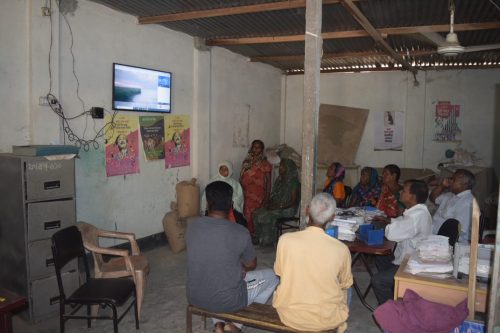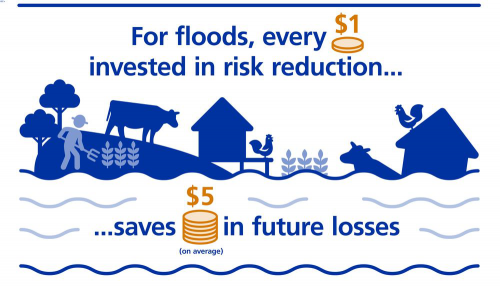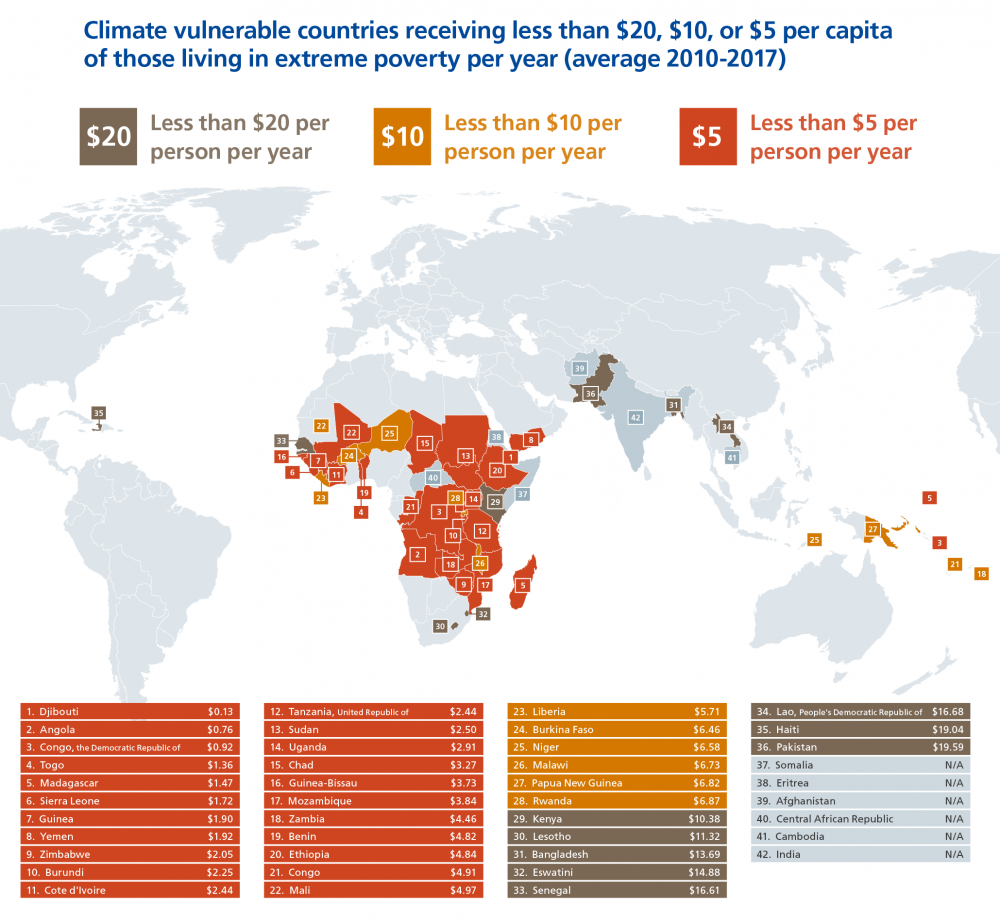13 October is International Day for Disaster Risk Reduction. This year the theme is Only Together. The focus is on enhancing international cooperation to developing countries. This gives us a perfect opportunity to remind you of the value of working together to deliver flood resilience investments.
Flood resilience investments save lives and livelihoods
Floods affect more people than any other hazard. In 2019 floods killed more than 1,500 people across the globe and displaced 10 million more.
The impacts of floods are hampering progress towards the Sustainable Development Goals and trap people in cycles of poverty. Many people in the rural communities we work with struggle as floods wash away their harvests or they are forced to take on debt to repair homes after floods.
Lives can be saved by investing in effective early warning systems. This includes developing response capacities in communities, making sure everyone has access to alerts and know how to respond when they receive them. Accessible and actionable forecasts can also protect people’s livelihoods as farmers have the information they need to harvest at the right time, rather than watch their crops wash away in floods.

For more on the urgent need to invest in flood resilience read our short policy brief Saving lives and livelihoods or this more in depth report from our partner LSE.
Working together to build resilience
The Alliance is built around a model which puts people at the centre of the decision making process. We use the Flood Resilience Measurement for Communities tool and participatory processes to ensure communities are able to prioritise the actions and investments that affect them. We convene communities, local and national governments and use evidence to help increase investment in flood resilience.
The economic return on flood resilience investment
Our estimations shows that for every dollar invested in pre-event flood resilience an estimated five dollars of future losses are avoided. Responding to and rebuilding after disasters is expensive. It makes economic sense to invest in Disaster Risk Reduction (DRR).

UNEP estimate that today developing countries need about $70bn to meet their climate change adaptation plans. In 2030 this is likely to be $300bn, and by 2050 the cost of adaptation in the global south is estimated to rise to $500bn.
Invest right and you cannot lose
One potential barrier to investment in disaster risk reduction is the uncertainty of return on investment. The value of expensive flood protection is less obvious during a year with below average rainfall.
This is why we encourage investments in DRR approaches that have multiple resilience dividends. Our research partners have developed the Triple Resilience Dividend Framework to aid the identification of and planning for co-benefits in disaster risk reduction work.
The three resilience dividends are:
- reducing and avoiding losses to lives, livelihoods, and assets;
- unlocking development potential by stimulating forward-looking planning, long-term capital investments, and entrepreneurship;
- garnering wider social and environmental co-benefits
You can learn more about the approach and its potential to support effective decision making around DRR investments in the blog Solutions providing multiple resilience dividends require integrated approach.
It’s only fair
Not enough is invested in climate change adaptation and disaster risk reduction. Recent research from ODI found that out of 23 wealthy countries that committed to providing $100bn in climate finance to low income countries by 2020 only three are paying their fair share.
And what is invested is not reaching those who need it most. Climate finance is not targeted at the countries who need it most, countries with widespread poverty and high disaster risk.

At COP26 later this month we will be using our evidence to ask for more and better quality investments in climate adaptation and flood resilience.
We will be talking about the real impacts of flooding on some of the most vulnerable people – living in countries deemed ‘too fragile’ to receive climate finance. We will be talking about community led disaster risk management – putting people at the heart of the solution – together we can reduce the impacts of flooding and build resilience for all our futures.

Comments